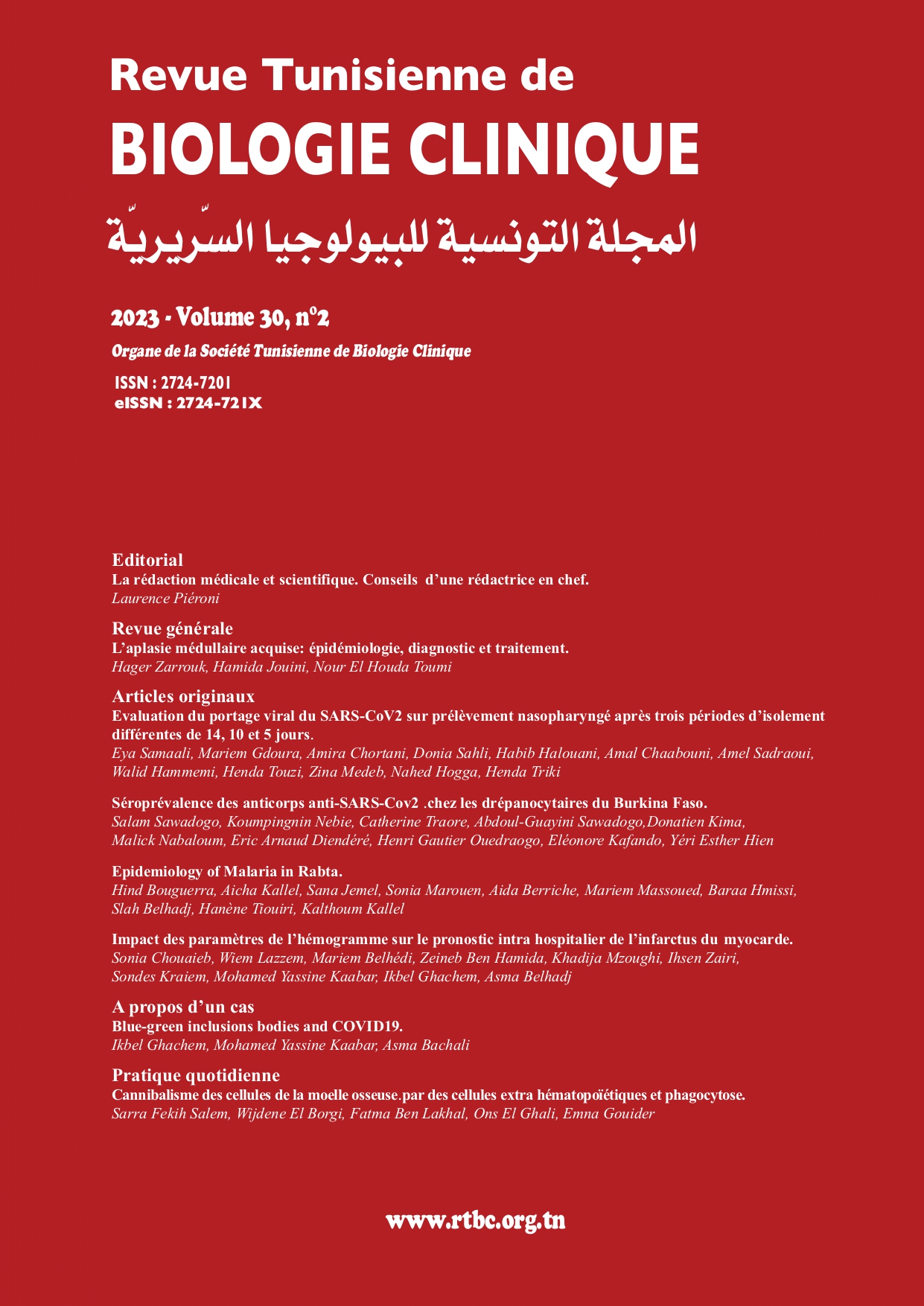Résumé
L’aplasie médullaire acquise est une pathologie rare. Elle est deux à trois fois plus répandue en Asie qu’en Europe et en Amérique. Elle est dotée d’une hétérogénéité clinique et nosologique. Dans 70-80% des cas, elle est idiopathique néanmoins certains facteurs de risque ont été identifiés. Parmi ces facteurs, on retrouve certains médicaments, des viroses, l’hépatite auto-immune, des maladies auto-immunes, la grossesse, le polymorphisme HLA,… Les critères diagnostiques associent une diminution stable de deux ou trois lignées sanguines, et une moelle pauvre sur la biopsie médullaire. L’aplasie médullaire acquise idiopathique n’a pas de marqueur spécifique et c’est principalement un diagnostic d’exclusion des autres étiologies d’insuffisance médullaire. Cette pathologie peut être traitée soit par l’allogreffe de cellules souches hématopoïétiques, soit par le traitement immunosuppresseur associant le sérum anti-lymphocytaire à la cyclosporine. L’Eltrombopag, un thrombopoïétine-mimétique de synthèse, a fait ses preuves dans le traitement des formes réfractaires et en première ligne en association avec le traitement immunosuppresseur standard. Le traitement de support basé sur les transfusions sanguines, la prophylaxie anti-infectieuse et la prévention de l’hémochromatose a contribué à améliorer le pronostic de cette hémopathie. Cette mise au point passe en revue l’épidémiologie, le diagnostic et le traitement de l’aplasie médullaire acquise.

Ce travail est disponible sous la licence Creative Commons Attribution 4.0 International .
(c) Tous droits réservés Hager Zarrouk, Hamida Jouini, Nour El Houda Toumi 2023

